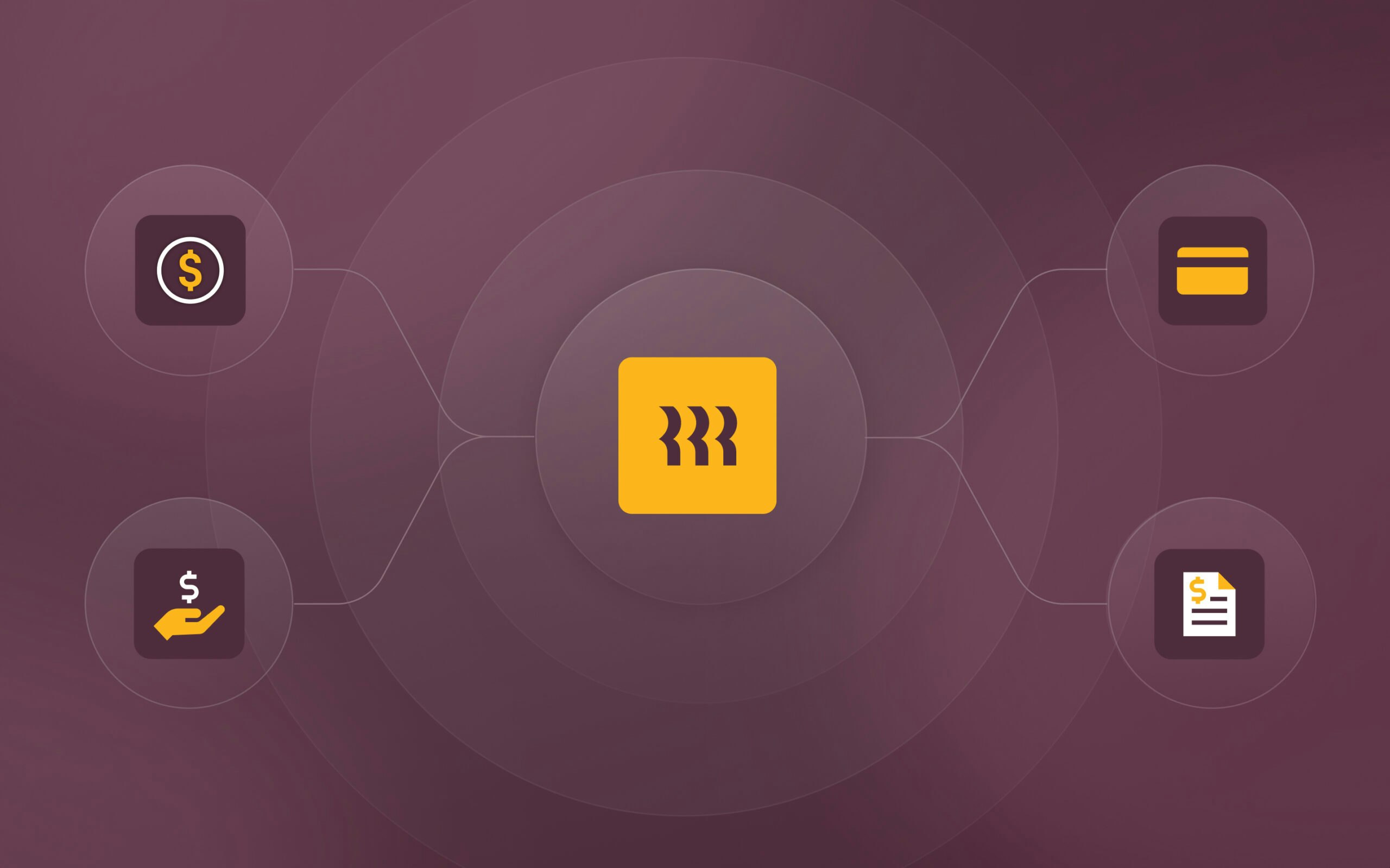P&L management: Complete guide + 5 useful tips

Cash flow issues, unprofitable expenses, runaway costs—these financial pitfalls can quickly sink a business. But with a firm handle on your profit and loss (P&L) statement, you can steer clear of danger and chart a course for sustainable growth.
This guide breaks down everything you need to know about effective P&L management, whether you're a small business owner, financial manager, or operations lead. By the end, you'll have a practical roadmap for boosting profitability, controlling costs, and mastering your company's financial health. Let's dive in.
What is P&L management?
P&L management is the process of controlling a company's revenue, costs, and expenses to maximize profitability. It involves continuously analyzing financial data, identifying trends and anomalies, and making strategic decisions to optimize the bottom line.
Imagine you're the CFO of a mid-sized manufacturing company. Every quarter, you pore over the P&L statement—a financial scorecard showing how much money is coming in (revenue) and going out (costs and expenses). You notice that sales are up 10% year-over-year, which is great. But you also see that raw material costs have increased 15%, eating into your gross margins.
To get things back on track, you implement a three-pronged P&L management plan:
- Renegotiate supplier contracts to secure better pricing on key inputs
- Invest in more efficient equipment to reduce waste and boost productivity
- Adjust pricing and promotions to focus on higher-margin products
Six months later, you check the P&L and see the results—margins are up, costs are down, and profits have never looked better. That's the power of proactive P&L management in action.
What is a P&L statement?
The P&L statement (also called an income statement) is the centerpiece of P&L management. It's a financial report that shows a company's revenue, costs, and expenses over a specific period, usually a month, quarter, or year.
The P&L follows a simple formula: Revenue - Costs - Expenses = Profit
While every P&L statement is unique, most follow a similar structure:
- Revenue: The total income generated from sales of products or services
- Cost of goods sold (COGS): The direct costs to produce the goods or services sold, including raw materials and labor
- Gross profit: Revenue minus COGS, representing the profit before overhead expenses
- Operating expenses: Indirect costs like rent, utilities, marketing, and administrative salaries
- Operating profit: Gross profit minus operating expenses, showing the profit from core business activities
- Non-operating income and expenses: This includes items like interest income, interest expense, gains or losses from investments, and foreign exchange gains or losses
- Taxes, interest, and other expenses: Non-operating costs like income taxes and loan interest
- Net profit: The "bottom line" after costs and expenses are subtracted from revenue
- Earnings per share (EPS): For public companies, net profit divided by the number of outstanding shares
What is P&L responsibility?
P&L responsibility refers to the accountability for managing a business unit's or organization's financial performance. In most organizations, P&L responsibility falls on the shoulders of finance managers, directors, VPs, and ultimately the CFO. They're tasked with creating the annual budget, providing accurate forecasts, and ensuring the company hits its profitability goals.
But P&L responsibility is about more than just crunching numbers. Finance leaders must partner closely with department heads to find creative ways to maximize revenue and minimize expenses. They need to identify risks and opportunities—and make tough decisions to keep the business financially healthy.
The importance of profit and loss management
Effective P&L management is critical for businesses of all sizes and stages. Here are some key reasons why it matters:
- Financial clarity: Regular P&L analysis gives you a crystal-clear picture of your financial performance. You can see what's working well, what's not, and where there's room for improvement.
- Informed decision-making: With accurate, timely P&L data at your fingertips, you can make smarter, more confident decisions about resource allocation, investments, and strategic direction. No more guesswork or gut feelings.
- Stakeholder confidence: Investors, lenders, and board members want to see that you have a firm grip on your financials. A well-managed P&L demonstrates that you're in control and positioned for success.
- Proactive problem-solving: By monitoring your P&L closely, you can spot potential issues early and take corrective action before they snowball into bigger problems.
- Competitive advantage: Companies with strong P&L management tend to be more agile, efficient, and profitable than their peers. They can seize opportunities faster, weather downturns better, and outperform the competition over the long run.
P&L management mistakes to avoid
Effective P&L management requires diligence, strategic thinking, and a keen eye for detail. Here are some common pitfalls that can undermine the success of even experienced finance professionals:
Ignoring non-financial metrics
Numbers tell a story, but they don't tell the whole story. Non-financial KPIs like customer satisfaction, employee turnover, and product quality can have a huge impact on your P&L. Make sure you're tracking and managing these "soft" metrics, too. For example, high customer satisfaction often leads to repeat business and referrals, boosting your revenue over time. Similarly, low employee turnover can reduce hiring and training costs, directly improving your bottom line.
Excessive spending
Uncontrolled or poorly managed expenses can quickly erode profits and damage your P&L. This often occurs when there's a lack of budgetary oversight or when departments operate in silos without considering the overall financial health of the organization. Common culprits include unnecessary travel expenses, overstaffing, or investing in underutilized equipment or software. To avoid this, implement clear spending guidelines, require approval for expenses over a certain threshold, and regularly review all cost centers for potential savings.
Overemphasizing short-term results
It's tempting to focus on quick wins that boost the bottom line, but don't lose sight of the big picture. Cutting costs too deeply or chasing low-margin sales can undermine your long-term profitability and growth. Instead, strive for a balance between short-term gains and long-term investments. This might mean accepting lower profits now to fund research or enter new markets that will pay off in the future.
Neglecting cash flow
Profits are great, but cash is king. A profitable company can still fail if it runs out of cash. Make sure your P&L management strategy accounts for cash flow timing and working capital needs. Pay attention to when money comes in and goes out, not just how much. A growing business might look good on paper but struggle if customers pay slowly while suppliers demand quick payment.
Failing to adapt
Markets, customers, and competitors are constantly evolving. Your P&L management approach needs to evolve, too. Don't get stuck in a "this is how we've always done it" mindset. Regularly review your methods and be open to new ideas. This might mean adopting new financial software, changing how you categorize expenses, or adjusting your reporting schedule to better match your business cycles.
Best practices to improve P&L management
Here are some best practices that can help finance leaders optimize their company's financial performance:
Automate data collection
Manual data entry is time-consuming and error-prone. Invest in tools that automatically pull financial data from your accounting software, bank accounts, and other sources into a central dashboard. You'll save hours of tedious administrative work and get more accurate, up-to-date P&L insights at your fingertips.
Collaborate with budget owners
Don't just hand down budget targets from on high. Work closely with department heads to create realistic, achievable budgets that align with overall company goals. Hold regular check-in meetings to review progress, identify variances, and course-correct as needed.
Conduct scenario analysis
Hope for the best, but plan for the worst. Use your P&L data to model out different scenarios, such as a sales slowdown, cost spike, or economic downturn. This will help you stress-test your strategies and develop contingency plans to mitigate risk. For example, you might identify key cost levers to pull in a recession, such as scaling back hiring or renegotiating supplier contracts.
Benchmark against peers
How does your P&L stack up against other companies in your industry? Use benchmarking data from industry associations, financial databases, or peer networks to see where you're over or under-performing. If your gross margins are significantly lower than the industry average, for instance, that's a red flag that you may need to raise prices, cut costs, or rethink your business model.
Communicate with stakeholders
P&L management isn't just a finance function—it's a team sport that requires buy-in and cooperation across the organization. Make sure everyone understands the key drivers of your P&L, why they matter, and how team members can impact them through their day-to-day decisions. Share regular updates on financial performance, celebrate wins, and be transparent about challenges. The more engaged and informed your team is, the more successful your P&L management efforts will be.
Manage your company’s finances with Rippling
If you're looking for an easier, more efficient way to stay on top of your P&L, Rippling's spend management software automates key finance tasks like expense management, approval workflows, and bill payments to vendors. It also syncs transactions to your general ledger to give finance teams an up-to-date view of company spend.
With Rippling, you can:
- Get real-time visibility into spending across departments and categories
- Set custom expense policies and approval rules to control costs
- Easily collect and reconcile receipts from employee purchases
Plus, Rippling integrates with your existing accounting and HR systems, so you can manage all your financial data in one place. It's a game-changer for busy finance teams looking to streamline P&L management.
Frequently asked questions
How often should a business review its P&L statement?
At a minimum, review your P&L monthly to track progress against budget and spot variances early. Many companies also do quarterly and annual reviews for higher-level strategic planning.
How does P&L management differ between small and large businesses?
The core principles are the same, but scale matters. Small businesses may have simpler P&Ls and more hands-on management, while large enterprises need robust systems and processes to handle complex global operations. Tailor your approach accordingly.
How do you run a P&L statement?
Most accounting software can generate P&L financial statements automatically based on your chart of accounts. If you're doing it manually, start by listing out all your revenue streams and subtracting COGS to get gross profit. Then, subtract operating expenses to arrive at operating profit. Finally, subtract taxes, interest, and any other expenses to calculate net profit.
Schedule a demo with Rippling today
This blog is based on information available to Rippling as of September 27, 2024.
Disclaimer: Rippling and its affiliates do not provide tax, accounting, or legal advice. This material has been prepared for informational purposes only, and is not intended to provide or be relied on for tax, accounting, or legal advice. You should consult your own tax, accounting, and legal advisors before engaging in any related activities or transactions.









